
On September 28, I was expecting 4 friends to arrive, the Skevingtons, Angela, Alexander and Jeff + my Danish friend Niels Dreyer. I went to the airport to pick them up and only found the Skevingtons, it appeared that Niels had taken a later flight. I had my driver pick up Niels later that day. The first two days were supposed to be relaxing days before I had arranged for a company to take them on a safari from September 30, to October 5. We did some easy birding in my garden and Kiligolf before the safari started. On the afternoon of the 28th before Niels arrived, we picked up 45 species. On the 29th , we did a morning birding before Niels and Jeff decided to play Golf, but combined with an afternoon birding, we picked up 76 species. On the morning of September 30th, the group were picked up by a safari company and I was only to see them back in the evening on October 5. The official birding trip were to start on October 6. I cheated a little and could not resist taking a picture in my garden on October 5
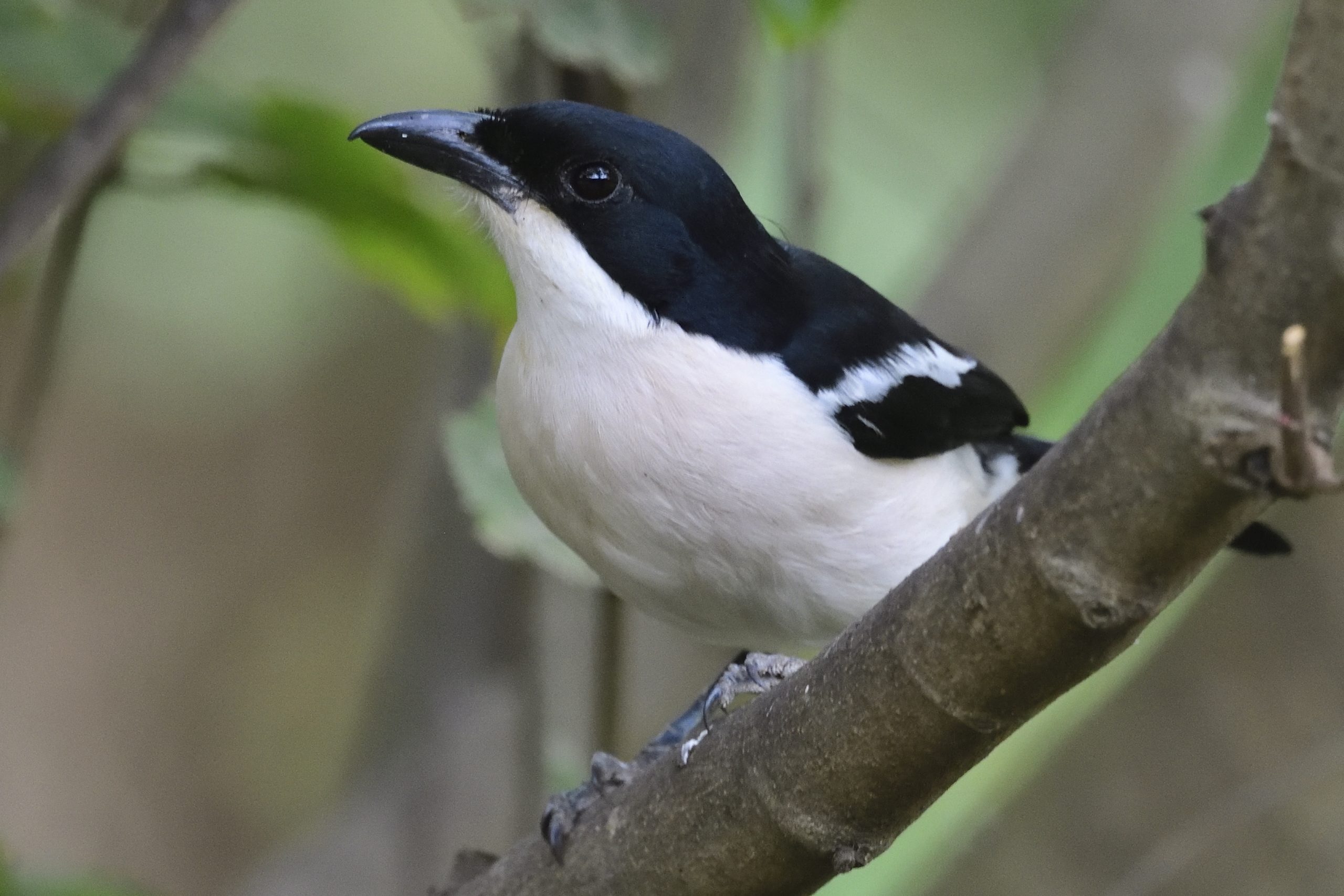
Tropical Boubou, Laniarius major, My Garden, Kiligolf, Usa River, Tanzania.
Day 1, October 6 – Kiligolf
My guide had arrived and we decided to do a proper birding round on Kiligolf. We got many of the NE African endemics and other birds this day including The local race of Crested (Grant´s) Francolin, White-bellied Go-away-bird, Greater Painted Snipe, Green Sandpiper, Blue-naped Mousebird, Spot-flanked barbet, Lesser Honeyguide, Long-tailed Fiscal, Red-faced Crombec, Buff-bellied Warbler, Red-faced Cisticola, African Yellow Warbler, Grey Olive Greenbul, Pale White-eye, Superb Starling, Bare-eyed Thrush, African Grey Flycatcher, Spotted Palm Thrush, Chestnut and Vitelline Masked Weaver, Black-faced and Crimson-rumped Waxbill, Purple Grenadier, Red-cheeked Cordonbleu and Reichenow´s Seed-eater. At night we heard Slender-tailed Nightjar. Selvine and my maid, Neema had made us a delicious meal and we retired early to bed that night.
Some pictures from Day 1:

Greater Painted-snipe (female), Rostratula benghalensis

Greater Painted-snipe (male), Rostratula benghalensis

Squacco Heron, Ardeola ralloides

Grey-olive Greenbul, Phyllastrephus cerviniventrus, Endemic to NE Africa
Day 2, October 7 – Lark Plains, Oldonyo Sambu – Monduli Mountains
We had an early start for the famous Lark Plains. We saw several Common Kestrels and Augur Buzzards on the way. After passing off from the main road, we picked up a few birds like Taita Fiscal and Capped Wheatear. We drove to the normal parking spot and my Masai friends had as usual already picked up the Beesley´s Lark. After having found the lark, we looked around for the Short-tailed and the Athi-short-toed Lark, but neither was to be found. We returned to the car and then while having breakfast, we all had good views of the Short-tailed Lark. Other species encountered on the Lark Plains itself were Chestnut-bellied Sandgrouse, Kori Bustard, Common, African and Horus Swift, Desert Cisticola, Eastern Chanting Goshawk, White-necked Raven, Foxy and Red-capped Lark. We got into the car and drove slowly towards Saruni´s Masai Boma and picked up some good birds on the way: Beautiful and Marico Sunbird, Black-faced Waxbill, Kenya Sparrow, White-bellied and Southern Grosbeak Canary. We took a walk in the dry Acacia Forest next to Saruni´s Boma and added amongst other birds: White-bellied Go-away-bird, Von der Decken´s and Northern Red-billed Hornbill, Red-and-yellow Barbet, Brubru, Northern White-crowned Shrike, Yellow-bellied Eremomela, Grey-capped Social Weaver, Red-fronted Prinia (Warbler), Ashy Cisticola, Banded Parisoma, African Gray Flycatcher, Speckle-fronted Weaver, White-headed Buffalo Weaver, Rüppel´s Vulture and Tawny Eagle. They already had birds like Red-throated Tit from their Safari, so we did not look for them in the dry Acacia Forest. We drove out to the main road and headed for Oldonyo Sambu. We arrived there and for the first time, I had to pay an entrance fee. Not feeling like arguing, I did pay up. Some of the birds we picked up at Oldonyo Sambu included: Eastern Chanting Goshawk, White-fronted Bee-eater, Red-fronted Barbet, Fischer´s Lovebird (probably hybrid), Chinspot Batis, Slate-coloured Boubou, Red-faced Crombec, Violet-backed, Hildebrandt´s and Fischer´s Starling, Schalow´s (Abyssinian) Wheatear, Scarlet-chested Sunbird, Baglafecht and Black-necked Weaver, Chestnut Sparrow and Reichenow´s Seed-eater. We returned to the car and drove to the next destination. This is a new place we have found for Lyne´s Cisticola. We found the Cisticola and a few other birds. The most interesting was a Cinnamon-breasted Bunting. We had lunch and started driving on some questionable roads up to Monduli Mountains. The roads were so dusty that we were all covered in dust from top to toe when we arrived on the top. We picked up my first Isabelline Wheatear of the year on the way up. We arrived a little early and it was still hot. We dipped on the Golden-winged Sunbird, but got quite some nice birds: Crowned Eagle, Hunter´s Cisticola, Cinnamon Bracken Warbler, Yellow-bellied Greenbul, Mbulu White-eye, Yellow-billed Oxpecker!, Streaky and Thick-billed Seed-eater. We returned home, showered off the dust and again had a lovely meal prepared by Selvine and Neema.
Some pictures from day 2

Besley´s Lark, Chersomane beesleyi, Endemic to a small area north of Arusha, Tanzania

Desert Cisticola, Cisticola aridulus

Banded Parisoma, Curruca boehmi, Endemic to NE Africa
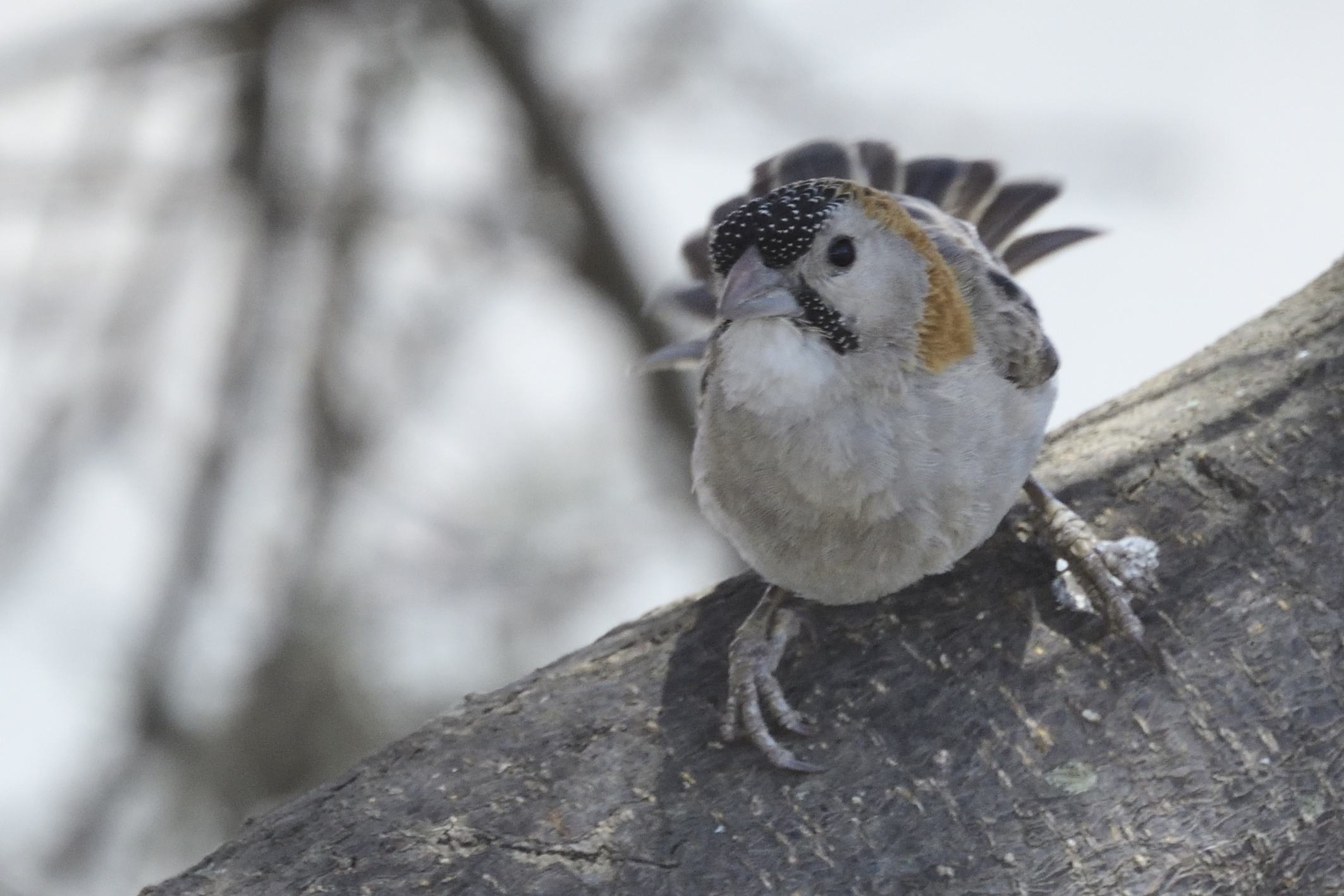
Speckle-fronted Weaver, Sporopipes frontalis
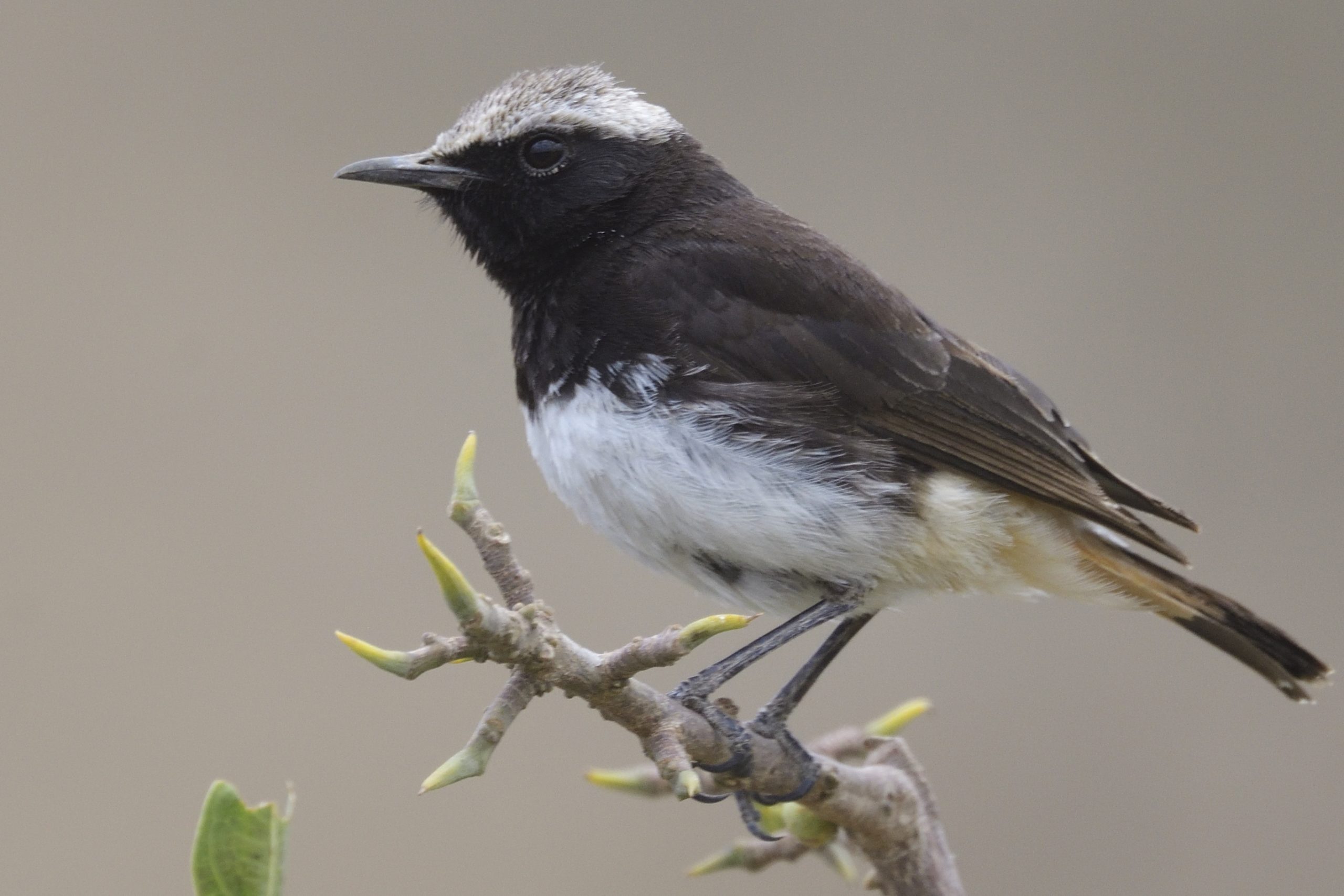
Schalow´s (Abyssinian) Wheatear, Oenanthe schalowi
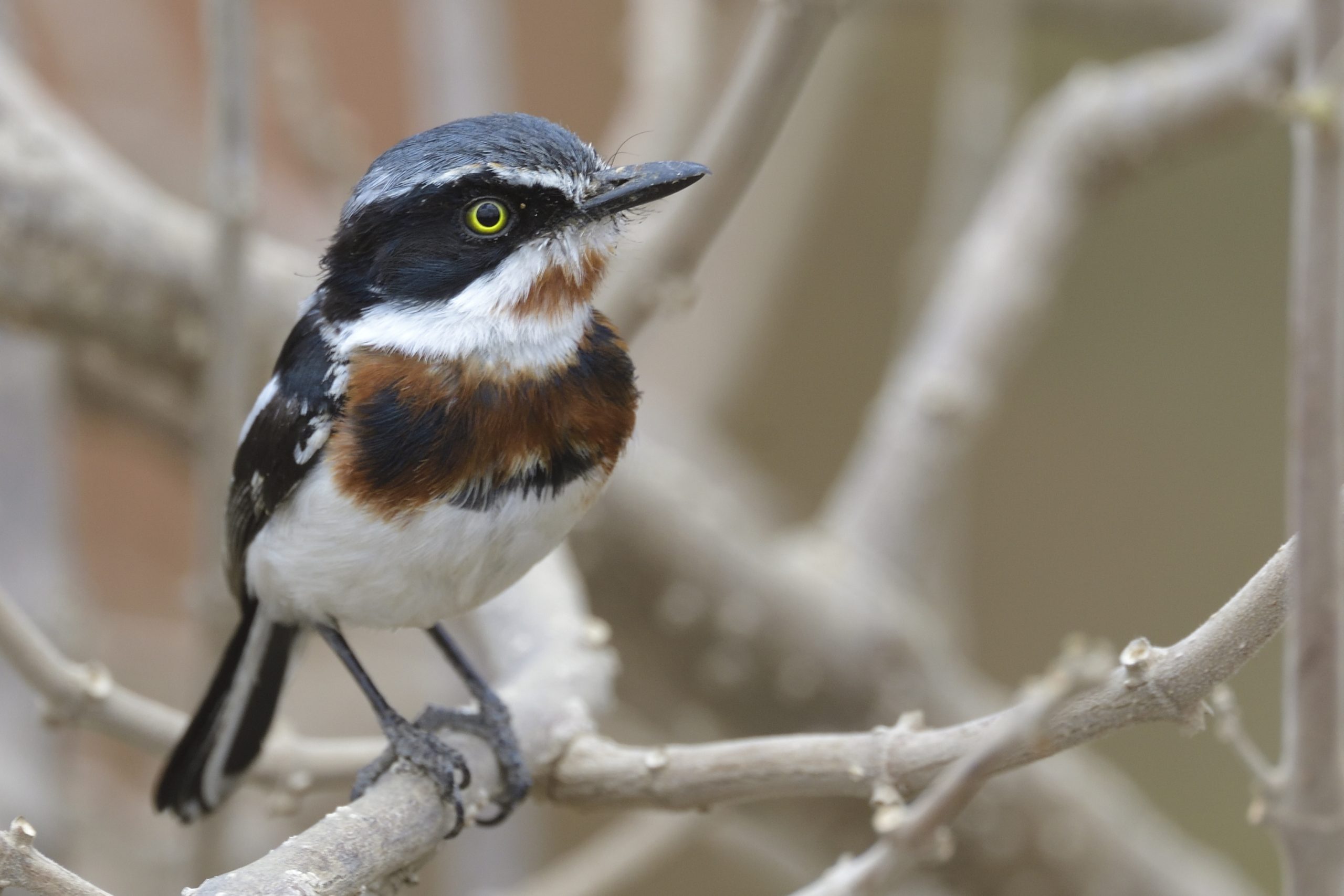
Chinspot Batis (Female), Batis molitor

Red-fronted Barbet, Tricholaema diademata, Endemic to NE Africa

Lyne´s Cisticola, Cisticola distinctus, Endemic to East Africa
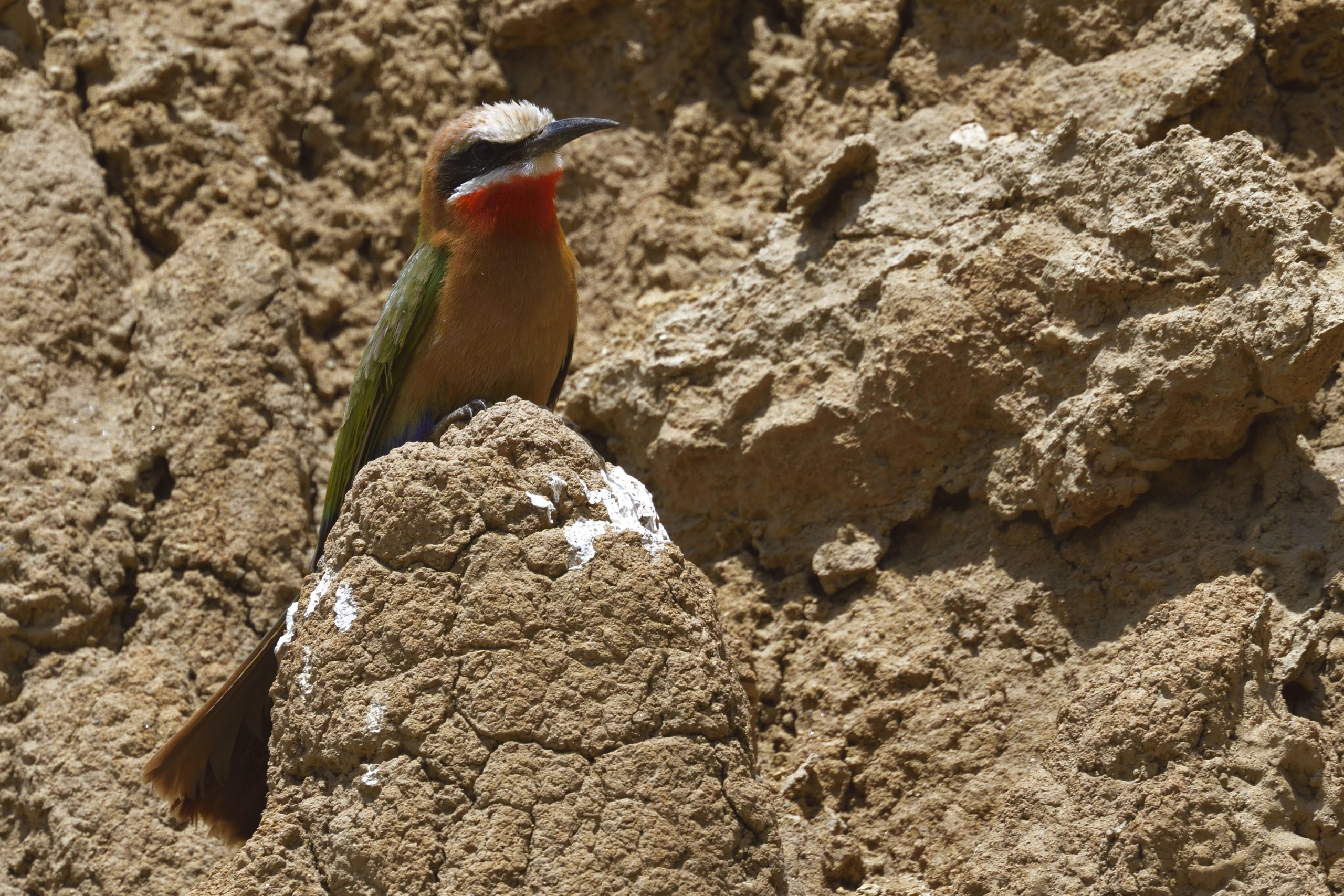
White-fronted Bee-eater, Merops bullockoides

Cinnamon-breasted Bunting, Emberiza tahapisi

African Stonechat, Saxicola torquatus

Hunter´s Cisticola, Cisticola hunteri, Endemic to East Africa
Day 3, October 8 – Tarangire National Park
We started early and arrived at the gate just before 08:00. As usually when I pay the entrance fee etc., my guide take my friends birding around the gate. They picked up quite a few species around the gate: Tawny Eagle, Nubian Woodpecker, Yellow-collared Lovebird, Meyer´s Parrot, Slate-coloured Boubou, Orange-breasted Bushshrike, Buff-bellied Warbler, Northern Pied Babbler, Ashy Starling and Swahili Sparrow. We loaded up the car and started our drive. On the way to the breakfast spot, we picked up amongst others these species: Coqui Francolin, Yellow-necked and Red-necked Spurfowl, Mourning Collared and Namaqua Dove, Black-faced and Chestnut-bellied Sandgrouse, White-bellied and Buff-crested Bustard, Lappet-faced and White-backed Vulture, Bateleur, Martial and Tawny Eagle, African Hoopoe, Southern Ground Hornbill, Von der Decken´s and Northern Red-billed Hornbill, Red-and-Yellow and D´Arnaud´s Barbet, Greater Honeyguide, Nubian and Bearded Woodpecker, Red-bellied Parrot, White-crested Helmetshrike, Magpie Shrike, Red and Yellow-billed Oxpecker, Pale White-eye, Red-billed and White-headed Buffalo Weaver, Rufous-tailed Weaver, Blue-capped Cordonbleu and Chestnut Sparrow. We stopped for breakfast at Public Camp site 1. We drove on towards our lunch spot and picked up amongst others these new species for the trip in Tarangire: Hildebrandt´s Francolin, Bare-faced Go-away-bird, Green Sandpiper, Pearl-spotted Owlet, Grey Kestrel, Black-necked Weaver, Black-faced Waxbill and Long-tailed Paradise Whydah. We arrived at the picnic site and it was totally full. We managed to sneak in at a table and had a quick lunch. On the way out, we choose the road we call the Bustard road, but we did not discover too many new species for the day, but we had good photo opportunities for quite a few birds. Here is a partial list: Common Ostrich, Fischer´s Sparrowlark, Yellow-throated Sandgrouse, Spotted Thick-knee, Double-banded Courser, African Grey Hornbill, Brubru, Rosy-patched Bushshrike, Zitting Cisticola and Speckle-fronted Weaver. We exited the park around 16:30 and were home just as it got dark.
Some pictures from day 3:

DArnaud´s Barbet, Trachyphonus darnaudii, Endemic to NE Africa
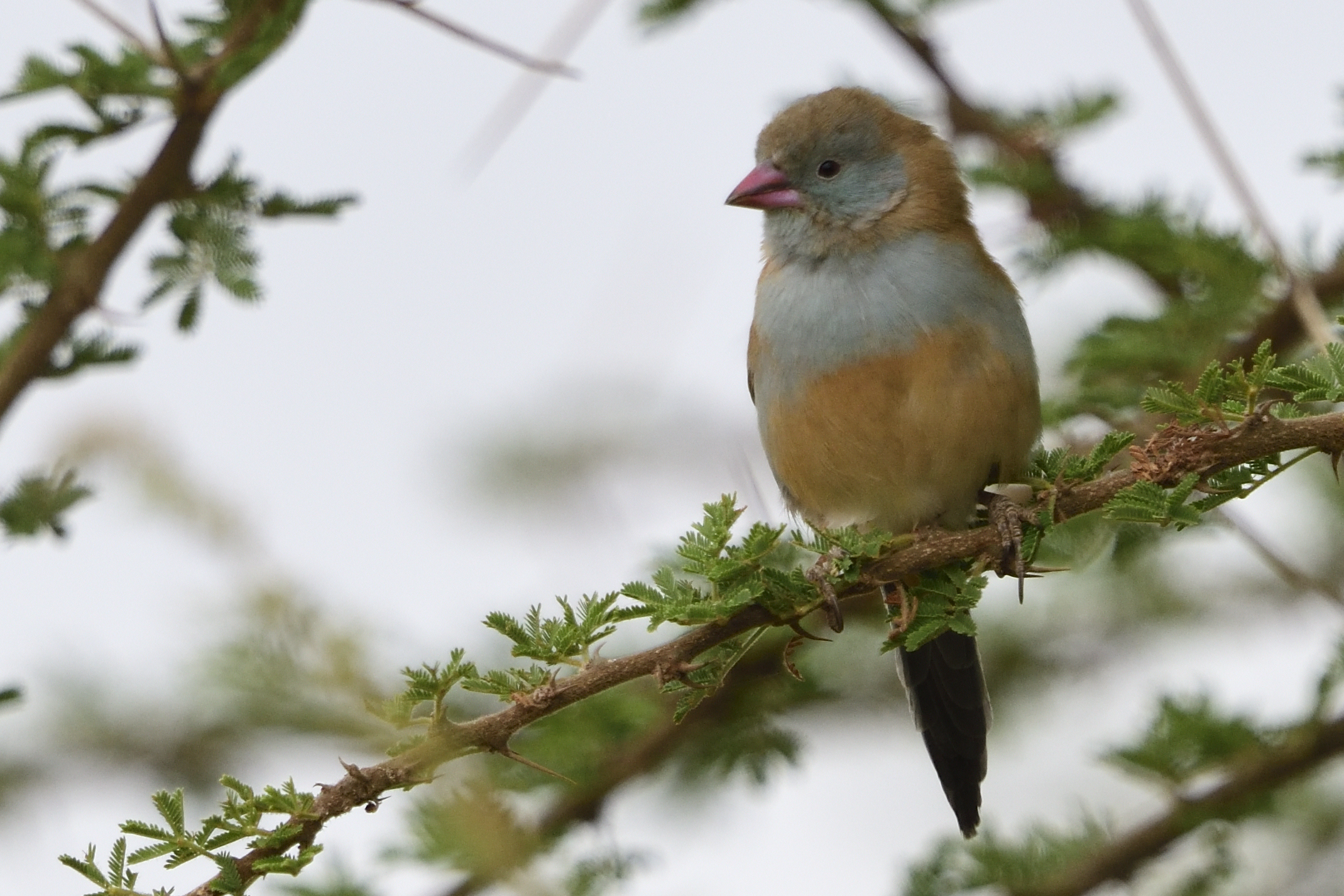
Blue-capped Cordonbleu (female), Uraeginthus cyanocephalus, Endemic to NE Africa

Buff-crested Bustard, Lophotis gindiana, Endemic to NE Africa

Ashy Starling, Lamprotornis unicolor, Endemic to Tanzania

Yellow-collarws Lovebird, Agapornis personatus, Endemic to East Africa

Rufous-tailed Weaver, Histurgops ruficauda, Endemic to N Tanzania with some records from Masai Mara in Kenya

Hildebrandt´s Spurfowl, Pternistis hildebrandti, Endemic to East Africa

Fischer´s Sparrow-Lark, Eremopterix leucopareia, Endemic to SE Africa

Spotted Thick-knee, Burhinus capensis
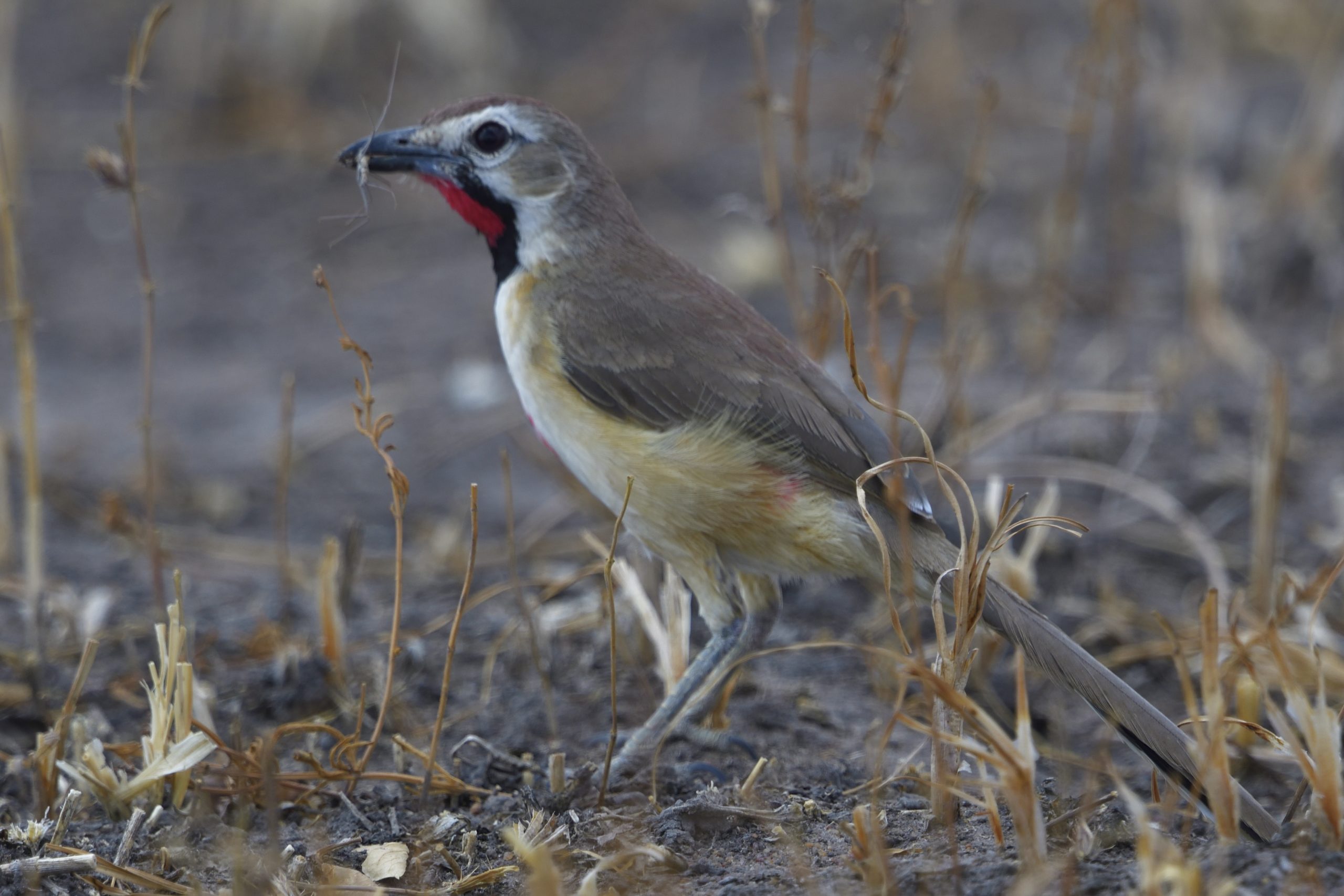
Rosy-patched Bushshrike, Telophorus cruentus, Endemic to NE Africa

Chestnut-bellied Sandgrouse, Pterocles exustus

Black-faced Sandgrouse, Pterocles decoratus, Endemic to NE Africa

Yellow-throated Sandgrouse, Pterocles gutturalis

Coqui (Thika) Francolin, Campocolinus coqui

Southern Ground Hornbill, Bucorvus leadbeateri

Long-tailed Fiscal, Lanius cabanisi, Endemic to NE Africa
Day 4, October 9 – Masai Steppes and Shambalaya Dam
We arrived early, but unfortunately it was quite cloudy. Some of the better/new birds we got before breakfast included House Crow, White-headed and Blue-naped Mousebird, Black-throated and Red-and-yellow Barbet, Red-fronted Tinkerbird, Pygmy Batis, Pink-breasted Lark, Northern Crombec, Grey Wren-Warbler, Red-fronted Prinia, Pale White-eye, Wattled Starling, Bare-eyed Thrush, White-browed Scrub-Robin, Spotted Palm-Thrush, Eastern Violet-backed, Beautiful, Hunter´s and Tsavo Sunbird. Black-necked and Lesser Masked Weaver, Green-winged Pyttilia, Purple Grenadier, Parrot-billed and Chestnut Sparrow, Yellow-spotted Bush-Sparrow, White-bellied Canary, Somali Bunting, Eastern Chanting Goshawk, European Bee-eater, Greater Honeyguide and Golden-breasted Starling. We were still quite some distance from our normal breakfast spot, so we decided to just park off the road and have breakfast. After breakfast the bird life slowed down quite a lot. We stopped at our normal walking spot, but it was very quiet. We drove all the way to the Black-capped Social Weaver colony. This was still active and provided a lifer for all my friends. We turned and headed towards the Shambalaya dam. Very dusty on the take off road, but we were soon cruising along the shoreline. We got Grey-headed Silverbill and a confiding Grey Wren-Warbler out in the open. Many typical water birds like: White-faced and Fulvous Whistling duck, White-backed and Knob-billed Duck, Spur-winged Goose, Blue-billed (Hottentot) Teal, Little Grebe, Common Moorhen, Red-knobbed Coot, Long-toed and Spur-winged Lapwing, Squacco, Black-headed, Grey, Striated and Black heron, Greater Painted-Snipe, Common and Wood Sandpiper, Three-banded plover, Collared Pratincole, Grey-headed Gull, Whiskered Terns (Breeding plumage), Great, Intermediate and Little Egret. African Openbill, Yellow-billed Stork, Long-tailed, Great and White-breasted Cormorants. Pink-backed Pelican, Glossy and African Sacred Ibis, African Fish Eagle. Other birds included Lilac-breasted Roller, Lesser Honeyguide, Yellow-breasted Apalis, Winding Cisticola, Brown-throated Martin, Crimson-rumped Waxbill, Nubian Woodpecker and Blue-capped Cordonbleu + many passerines we had seen earlier in the day. We arrived home just before 18:00 and as well as my local garden visitors, we had a pair of Red-throated Twinspots there. All in all a good day where Jeff recorded 140 species on e-bird for the day.
Some pictures from Day 4:

Northern Crombec, Sylvietta brachyra

White-bellied Canary, Crithagra dorsostriata, Endemic to NE Africa

Pink-breasted Lark, Calunulauda poecilosterna, Endemic to NE Africa

Blue-naped Mousebird, Urocolius macrourus

White-headed Mousebird, Colius leucocephalus, Endemic to NE Africa

Red-fronted Prinia (Warbler), Prinia rufifrons
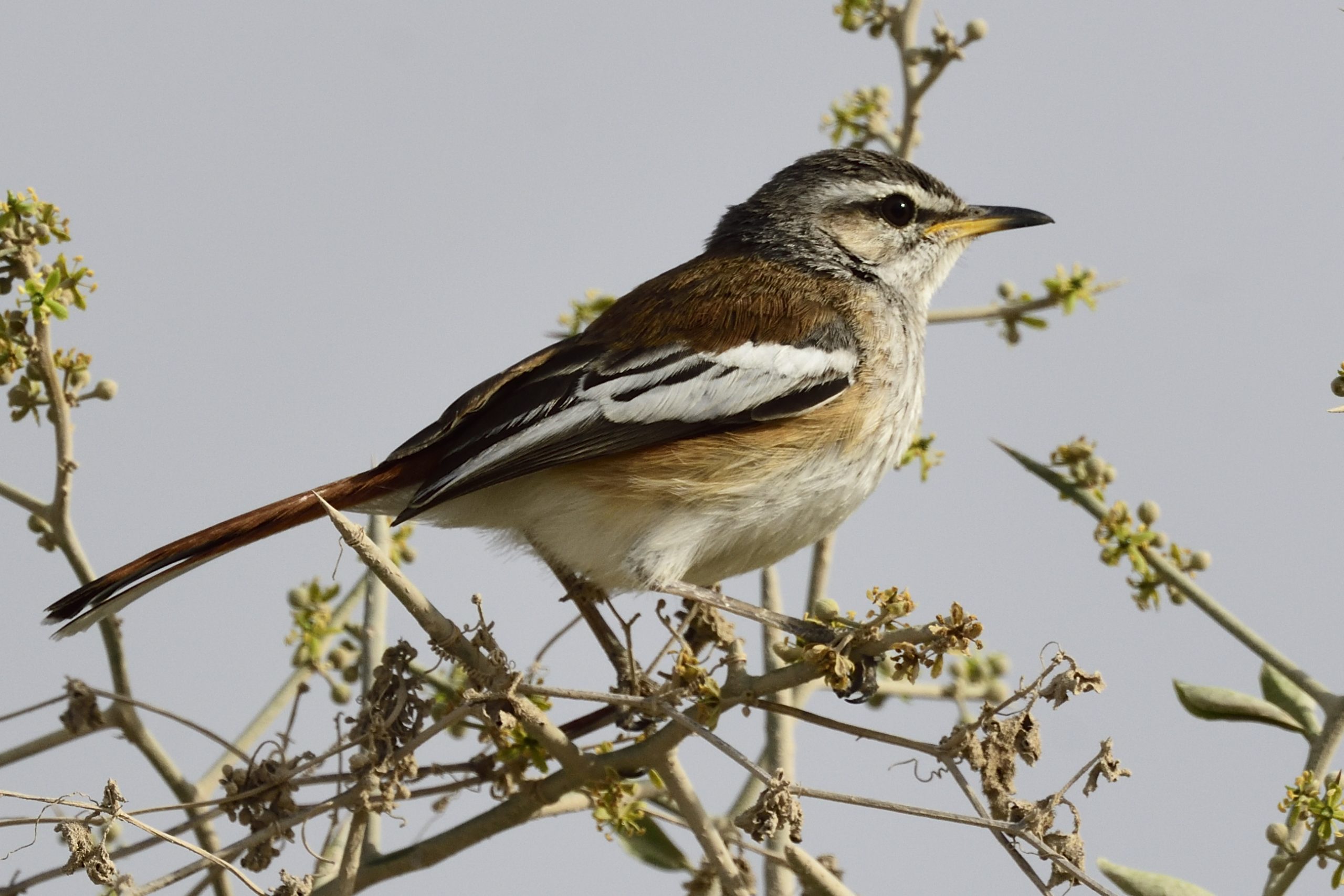
White-browed Scrub-Robin, Cercotrichas leucophrys

Golden-winged Starling, Lamprotornis regius, Endemic to NE Africa

Pygmy Batis, Batis perkeo, Endemic to NE Africa

Black-capped Social Weaver, Pseudonigrita cabanisi, Endemic to NE Africa

Grey Wren-Warbler, Calamonastes simplex, Endemic to NE Africa

Long-toed Lapwing, Vanellus crassirostris

Wood Sandpiper, Tringa glareola
Day 5, October 10, Kiligolf – Same – South Pare Mountains – Same
This day was the start of the Safari. The first stop were at Elephant Motel in Same. I drove my friends in the Green Land Rover whilst Selvine and my guide were driving in my White Land Rover. We picked up our guide and drove straight to an area just outside Mkomazi NP. We were at the birding site around 11:20 and started picking up birds. Here are some that we encountered: Black Cuckoo, Abyssinian Scimitarbill, Spot-flanked + other Barbets, Mouse-coloured Penduline Tit, Tiny Cisticola, Southern Black Flycatcher, Black-bellied, Eastern Violet-backed and Tsavo Sunbird, Black-faced Waxbill, Black-necked Weaver and Somali Bunting. We drove back to the motel for lunch and were ready to drive up the South Pare Mountains in the early afternoon. The main target there were the South Pare White-eye (we saw a flock of 70+). Other good birds included Hartlaub´s Turaco, Black Sparrowhawk, Mountain and Augur Buzzard, Moustached Tinkerbird, Silvery-cheeked Hornbill, Olive Woodpecker, East coast Boubou, Eastern Nicator, Singing Cisticola, African Yellow Warbler, Black Saw-wing, Placid Greenbul, Amethyst and Usambara Double-collared Sunbird, Red-backed Mannikin, Southern Citril and Reichenow´s Seed-eater. We drove back to the Motel, had dinner and an early night.
Some pictures from Day 5

Red-and-yellow Barbet, Trachyphonus erythrocephalus, Endemic to NE Africa

South Pare White-eye (Young bird), Zosterops winifredae, Endemic to South Pare Mountains, Tanzania
Day 6, October 11, Same to Magamba Forest, West Usambara
We birded the same area just outside Mkomazi National park in the morning before we returned to the motel for breakfast. Some of the species we picked up that morning: Pearl-spotted Owlet, Eastern Chanting Goshawk, Eastern Black-headed Batis, Eastern Violet-backed, Black-bellied and Tsavo Sunbird, Wahlberg´s Eagle, Northern Brownbul, Black-throated and Spot-flanked Barbet, Abyssinian Scimitarbill, Von der Decken´s Hornbill, Tiny Cisticola, Pink-breasted Lark and Grey Wren Warbler. The car were packed after breakfast and we headed out for Magamba Forest in West Usambara. After camp were set up, we went out birding. Usambara Double-collared Sunbird, African Olive Pigeon, Tambourine Dove, Hartlaub´s Turaco, African Swift, Bar-tailed Trogon, Crowned Hornbill, Olive Woodpecker, Fülleborn´s Boubou, White-tailed Crested Flycatcher, Red-capped Forest Warbler, Evergreen Forest Warbler, Cinnamon Bracken Warbler, Shelley´s, Mountain and Montane Tiny Greenbul, Yellow-throated Woodland Warbler, Southern Yellow White-eye, Sharpe´s Starling, Usambara Thrush, Cape Robin-Chat, White-starred Robin, Olive Sunbird, Yellow-bellied Waxbill and Baglafecht Weaver were some of the birds registered on the first afternoon in Magamba Forest. Selvine had dinner ready and we as usual retired early too bed.
Some pictures from Day 6:

Black-throated Barbet, Tricholaema melanocephala, Endemic to NE Africa

Spot-flanked Barbet, Tricholaema lacrymosa, Endemic to East Africa

Northern Brownbul, Phyllastrephus strepitans, Endemic to NE Africa

Tiny Cisticola, Cisticola nana, Endemic to NE Africa

Yellow-spotted Bush Sparrow, Gymnoris pyrgita

Reichenow´s Seed-eater, Chrithagra reichenowi, Endemic to NE Africa

Eastern Violet-backed Sunbird (female), Anthreptes orientalis, Endemic to NE Africa

Black-bellied Sunbird (female), Cinnyris nectarinoides, Endemic to NE Africa

Black-bellied Sunbird, Cinnyris nectarinoides, Endemic to NE Africa

Eastern Black-headed Batis, Batis minor, Endemic to NE Africa
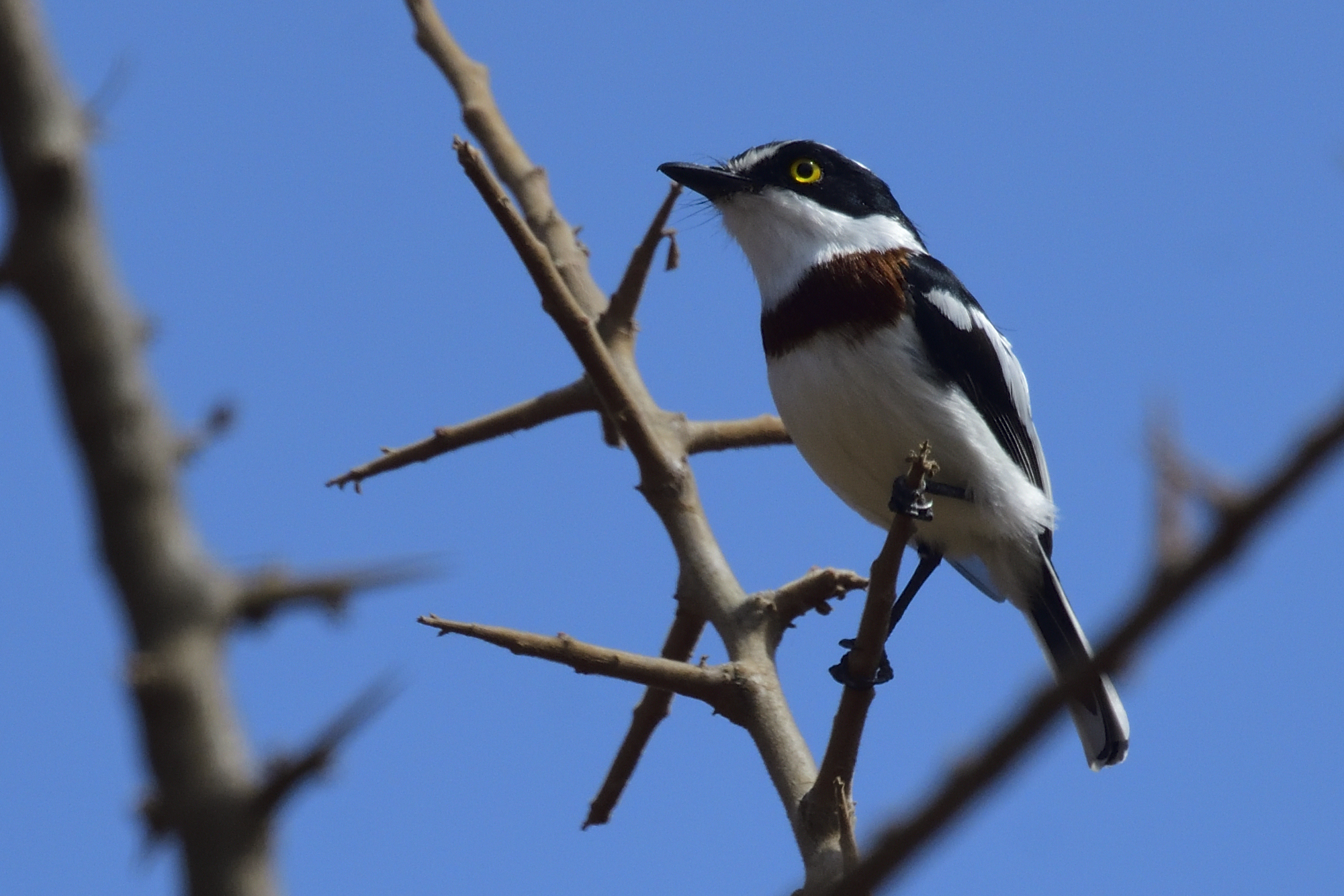
Eastern Black-headed Batis (female), Batis minor, Endemic to NE Africa

Red-capped Forest Warbler, Artisornis metopias, Endemic to Eastern Arc Mts of Tanzania and N Mozambique
Day 7, October 12, Magamba Forest
Full day in Magamba Forest, many of the same species as the day before, here are some of the species we added in the morning: African Black Duck, Eastern Bronze-naped Pigeon, Tambourine Dove, Barred Long-tailed Cuckoo, Crowned Eagle, Black Sparrowhawk, Silvery-cheeked Hornbill, Moustached Tinkerbird, Bar-throated Apalis, Red-rumped Swallow, Black Saw-wing, Stripe-cheeked Greenbul, African Hill Babbler, Waller´s Starling, African Dusky Flycatcher, African Stonechat, Spot-throat Olive Sunbird, Thick-billed Weaver, Red-faced Crimsonwing, Oriole Finch and Southern Citril. We walked back to camp for lunch. In the afternoon, we added a few more species: Lemon Dove, Common Buzzard, Shelley´s Greenbul and Usambara Akalat. We returned to camp, had dinner and retired early to bed.
Some pictures from Day 7:

Sharpe´s Starling, Poeoptera sharpii, Endemic to NE Africa

Fülleborn´s Boubou, Laniarius fuelleborni, Endemic to Eastern Arc Mts of Tanzania, N Malawi andNE Zambia

Red-faced Crimsonwing (Female), Cryptospiza reichenovii

Olive Sunbird (Young bird), Cyanomitra olivacea

Usambara Double-collared Sunbird (female), Cinnyris usambaricus, Endemic to S Pare and Usambara mountains of Tanzania

Usambara Weaver, Ploceus nicolli, Endemic to Eastern Arc Mountains of Tanzania
Day 8, October 13 – Magamba Forest, West Usambara to Amani Forest East Usambara
Morning birding in Magamba before we packed camp and started the drive to Amani Forest in East Usambara. We saw quite a few birds, but nothing new. The drive went smooth and we stopped at our normal spot just north of Muheza and got Coastal Cisticola and Common Waxbill. We continued up the mountain and stopped at the lower forest, but it was very quiet, so we continued to Amani Forest Headquarters. We parked the car at our lodging for the night and was immediately greeted by a pair of Amani Sunbirds. In addition Collared Sunbird and Palm-nut Vulture. We checked in and did a small walk before nightfall. Here are some of the species we observed: African Green Pigeon, African Palm Swift, Long-crested Eagle, Silvery-cheeked Hornbill, White-eared and Green Barbet, Violet-backed, Black-bellied and Kenrick´s Starling, African Dusky Flycatcher, Banded Green, Collared and Amethyst Sunbird, Red-backed Mannikin and a very confiding Green Tinkerbird. We returned to camp, freshened up and had dinner at the restaurant. Again we retired early to bed.

Bar-tailed Trogon, Apoloderma vittatum

Southern Citril, Crithagra hyposticta, Endemic to SE Africa

Coastal Cisticola, Cisticola haematocephalus, Endemic to coastal E Africa

Amani Sunbird, Hedydipna pallidigaster, Localised endemic to East Africa

Kenrick´s Starling, Poeoptera kenricki, Endemic to East Africa

Long-crested Eagle, Lophaetus occipitalis

Green Tinkerbird, Pogoniulus simplex, Endemic to SE Africa
Day 9, October 14 – Amani Forest
On this morning we were driving up from camp to find 4 target birds.
Jeff had looked for the Usambara Eagle-Owl at night and had heard 2 birds duetting, but could not see them (as usual). We started early from camp to get to our normal spot for Long-billed Forest Warbler and Kretchmer´s Longbill. We parked the car and walked close by where we normally find the birds. We found other birds like East Coast Boubou, Brown-hooded Kingfisher, Fischer´s Turaco, Green-headed Oriole, Pale Batis, Little Greenbul, Common Square-tailed Drongo, Cabanis´s Bunting, Dark-backed Weaver and Green-headed Oriole before we finally connected with the Forest Warbler and the Longbill. We drove to our spot for Sharpe´s Akalat. Just when we parked the car, we found a single bird (the only one of the morning). Everyone got good views, but no pictures. The Skevington´s stayed behind to collect some flies. Niels and my guide took a path in the forest and on their way out had fantastic views of Olive Ibis. Other birds recorded in the spot for the Akalat included: Black-fronted Bushshrike, Yellow-streaked Greenbul, Uluguru Violet-backed Sunbird and Mountain Wagtail. The last prime target were the Half-collared Kingfisher. After some searching, we also found one on the way down to camp. The last good bird before we reached camp for lunch were a Blue-spotted Wood-Dove. After lunch we did the walk starting from the Amani Headquarter. Of good/new birds we picked up Mosque Swallow, Amathyst Sunbird, African Harrier-Hawk, Silvery-cheeked Hornbill and Green Barbet. I noticed a little flowery tree a little bit from the main path. We walked over and had fantastic views of Purple-banded, Uluguru-Violet-baked and Banded Green Sunbird. We continued on the path and got amongst others: Black-and-white Shrike Flycatcher, White-necked Raven, Black-headed Apalis, Red-backed Mannikin, Forest Batis, Red-capped Robin-Chat and Southern Citril. In the late afternoon, we had 2 Olive Ibis fly over + we heard the Usambara Eagle-Owl at night.
Some pictures from Day 9:

East Coast Boubou, Laniarius sublacteus, Endemic to coastal East Africa.

Brown-hooded Kingfisher, Halcyon albiventris

Shelley´s Greenbul, Arizelocichla masukuensis, Endemic to Easter Arc Mts of Tanzania and N Malawi
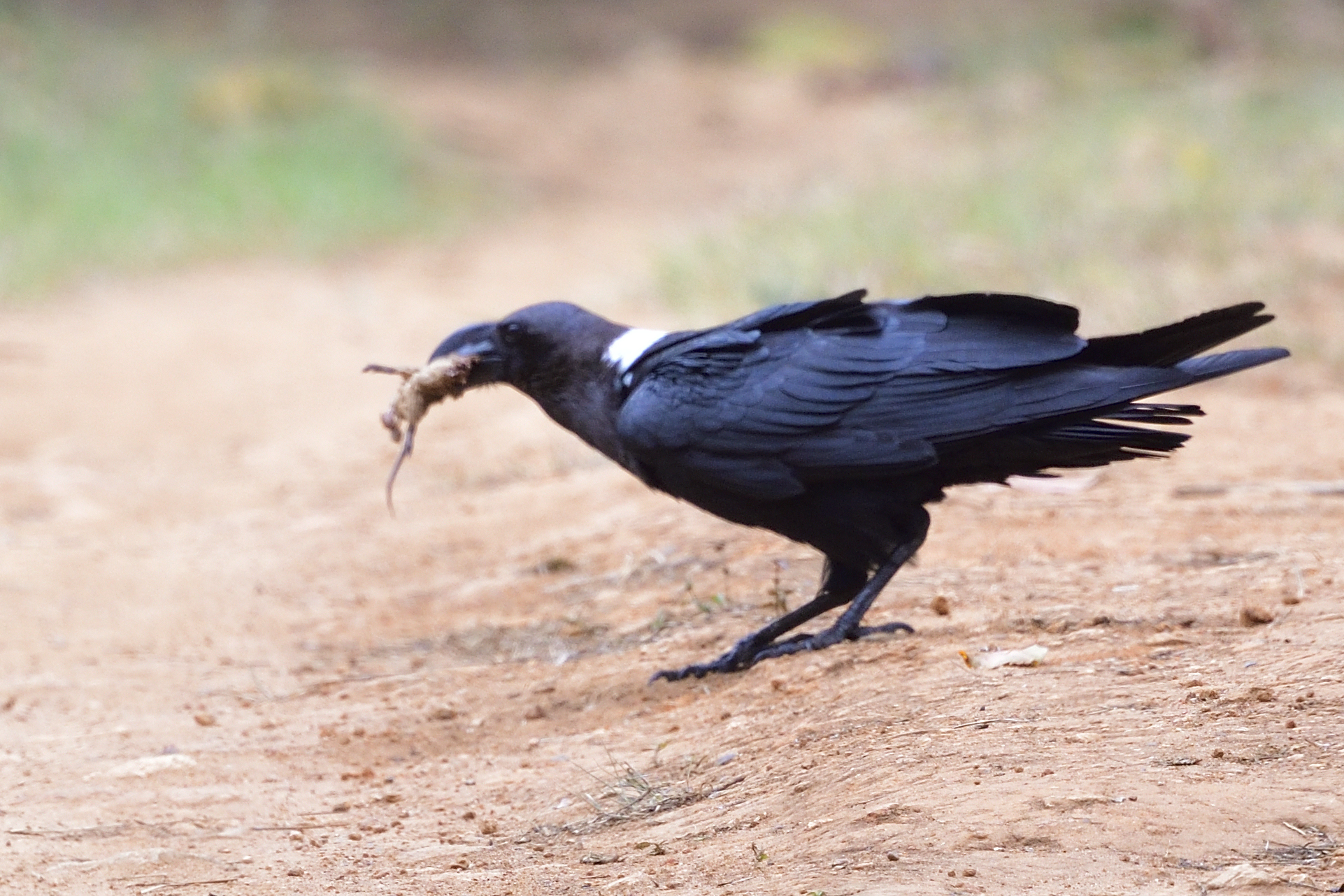
White-necked Raven, Corvus albicollis
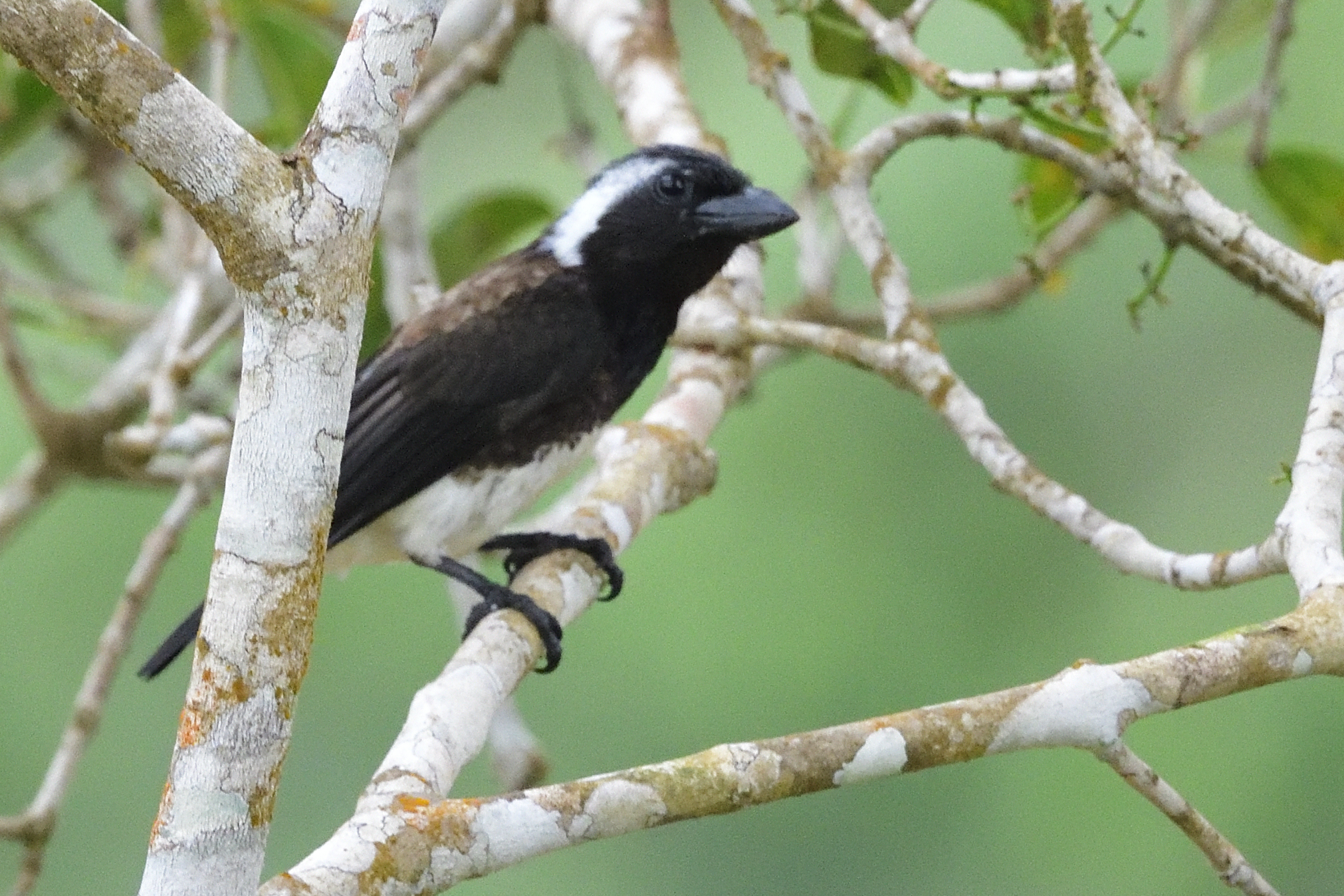
White-eared Barbet, Stactolaema leucotis

Banded Green Sunbird, Anthreptes rubritorques, Endemic to Eastern Arc Mts of Tanzania

Purple-banded Sunbird, Cinnyris bifasciatus

Purple-banded Sunbird (Female), Cinnyris bifasciatus

Uluguru Violet-backed Sunbird, Anthreptes neglectus, Localised endemic to East Africa
Day 10, October 15 – Amani Forest
We had decided to go down to the lower forest that morning to pick up some of the specials there. Some of the birds we registered included: Green Malkoha, Southern Banded Snake Eagle, Black Sparrowhawk, Narina Trogon, White-eared Barbet, Black Cuckooshrike, Green-headed Oriole, Forest Batis, Chestnut-fronted Helmetshrike, Blue-mantled Crested Flycatcher, Usambara Hyliota, Little Greenbul, Fisher´s Greenbul, Little Yellow Flycatcher, Tanzanian Illadopsis, Red-tailed Ant-Thrush, Grey Tit Flycatcher, Plain-backed Sunbird, Uluguru Violet-backed Sunbird and Cabanis´s Bunting.
After we finished in the lower forest, we drove back to camp for lunch. From the first two bridges, we observed Half-collared Kingfishers.
In the afternoon my friends took a walk down the road from the headquarters. These are some of the birds they observed: White-browed Coucal, Klaas´s Cuckoo, Crowned and Wahlberg´s Eagle, Lanner Falcon, Grey Cuckooshrike, Forest Batis and Banded Green Sunbird. I drove down the road to pick them up and we were back in camp around 18:30
Some pictures from Day 9:

Green Malkoha, Ceuthmochares australis

Chestnut-fronted Helmetshrike, Prionops scopifrons

Green-headed Oriole, Oriolus chlorocephalus
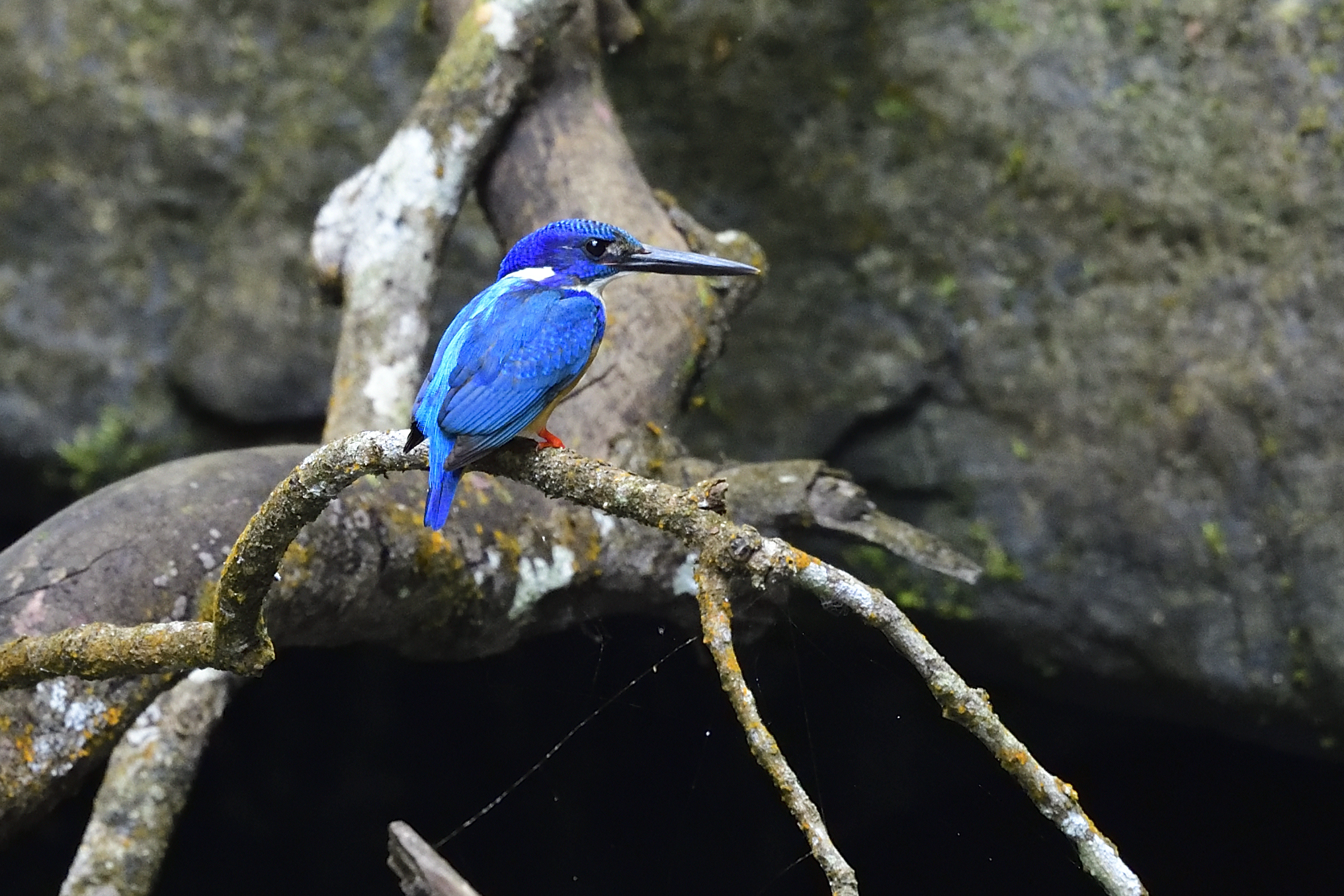
Half-collared Kingfisher, Alcedo semitorquata

Silvery-cheeked Hornbill, Bycanistes brevis

Green Barbet, Stactolaema olivacea
Day 11, October 16 – Amani Forest – Same
That morning were the morning for departure. Normally we bird the lower forest on the last morning, but my friends insisted on birding around camp. Here are some of the birds they observed: Tambourine Dove, Fischer´s Turaco, African Harrier-Hawk, Green Barbet, Green Tinkerbird, Lesser Honeygide, Little-spotted (Green-backed) and Mombasa Woodpecker, African Broadbill, Grey Cuckooshrike, Forest Batis, Yellow-streaked Greenbul, Waller´s, Kenrick´s and Black-bellied Starling, Red-tailed Ant-Thrush, Orange Ground-Thrush (heard), White-chested Alethe (heard) and Dark-backed Weaver.
I had packed the car and soon after we left for Same. After lunch at Elephant Motel, we continued to my spot outside Mkomazi NP. Here are some of the species we observed that afternoon: Crowned and Wahlberg´s Eagle, Gabar Goshawk, Pearl-spotted Owlet, Nubian Woodpecker, Red-bellied Parrot, Slate-coloured Boubou, Northern Red-billed and Von der Decken´s Hornbill, a pair of white morphed African Paradise Flycatchers, Red-faced Crombec, Grey Wren-Warbler, Bare-eyed Thrush, Spotted Palm Thrush, Eastern Violet-backed, Hunter´s, Tsavo and Black-bellied Sunbirds, Red-headed and Black-necked Weaver, Yellow-spotted Bush Sparrow and Reichenow´s Seed-eater. We returned to the Motel, had dinner and retired early as normal.
Some pictures from Day 11:

Red-bellied Parrot, Poicephalus rufiventris, Endemic to NE Africa

Hunter´s Sunbird, Chalcomitra hunteri, Endemic to NE Africa

Von der Decken´s Hornbill (Female), Tockus deckeni, Endemic to NE Africa

Cardinal Woodpecker, Dendropicos fuscescens

African Paradise Flycatcher (White morph), Tersiphone viridis

Red-fronted Tinkerbird, Pogoniulus pusillus
Day 12, October 17 – Same – Nyumba Ya Mungu Dam – Kiligolf
Since we missed a few birds on the Masai Steppes, we had decided to visit an area just before Nyumba Ya Mungu Dam that day. Before that we stopped at an area where we could find the missing birds, Scaly Chatterer and Pringle´s Puffback. Other birds we registered in the area included Black-faced Sandgrouse, White-headed and Blue-naped Mousebirds, Slate-coloured Boubou, Grey-headed Bushshrike, Red-fronted Prinia, Northern Brownbul, Pale White-eye, Hunter´s and Tsavo Sunbirds, Southern Grosbeak Canary and Somali Bunting.
We then drove towards the dam and stopped for a flock of African Silverbills and a Rosy-patched Bushshrike. On the dam itself, we picked up amongst others: White-faced Whistling Duck, Little Grebe, Red-knobbed Coot, Water Thick-knee, Spur-winged Lapwing, Kittlitz´s, Common Ringed and Three-banded Plovers, African Jacana, Black-tailed Godwit, Ruff, Curlew, Common and Marsh Sandpiper, Little Stint, Common Greenshank, Grey-hooded Gull, Gull-billed and Whiskered Terns, African Skimmer, African Openbill, Yellow-billed Stork, Long-tailed and White-breasted Cormorants, Great White and Pink-backed Pelicans, Hamerkop, Grey, Black and Squacco Herons, Great, Glossy and African Sacred Ibis, African Fish-Eagle, Great Intermediate, Cattle and Little Egrets. Other birds included Northern Wheatear, Cut-throat Finch and on the way from the Dam, Western Osprey.
We drove home to my house on Kiligolf and my friends took pictures of Garden birds from the comfort of my balcony. My maid and Selvine made us a nice dinner and we retired early.
Some pictures from day 12:

Scaly Chatterer, Argya aylmeri, Endemic to NE Africa

Eastern Violet-backed Sunbird (female), Anthreptes orientalis, Endemicto NE Africa

African Silverbill, Euodise cantans

Hammerkop, Scopus umbretta

Glossy Ibis, Plegadis falcinellus

Spur-winged Lapwing, Vanellus spinosus

Egret unidentifiable, either a Dimorphic or a strange coloured Little

Kittlitz´s Plover, Charadrius pecuarius

Three-banded Plover, Charadrius tricollaris

Black-tailed Godwit, Limosa limosa

Curlew Sandpiper, Calidris ferruginea

Marsh Sandpiper, Tringa stagnatilis

Ruff, Calidris pugnax
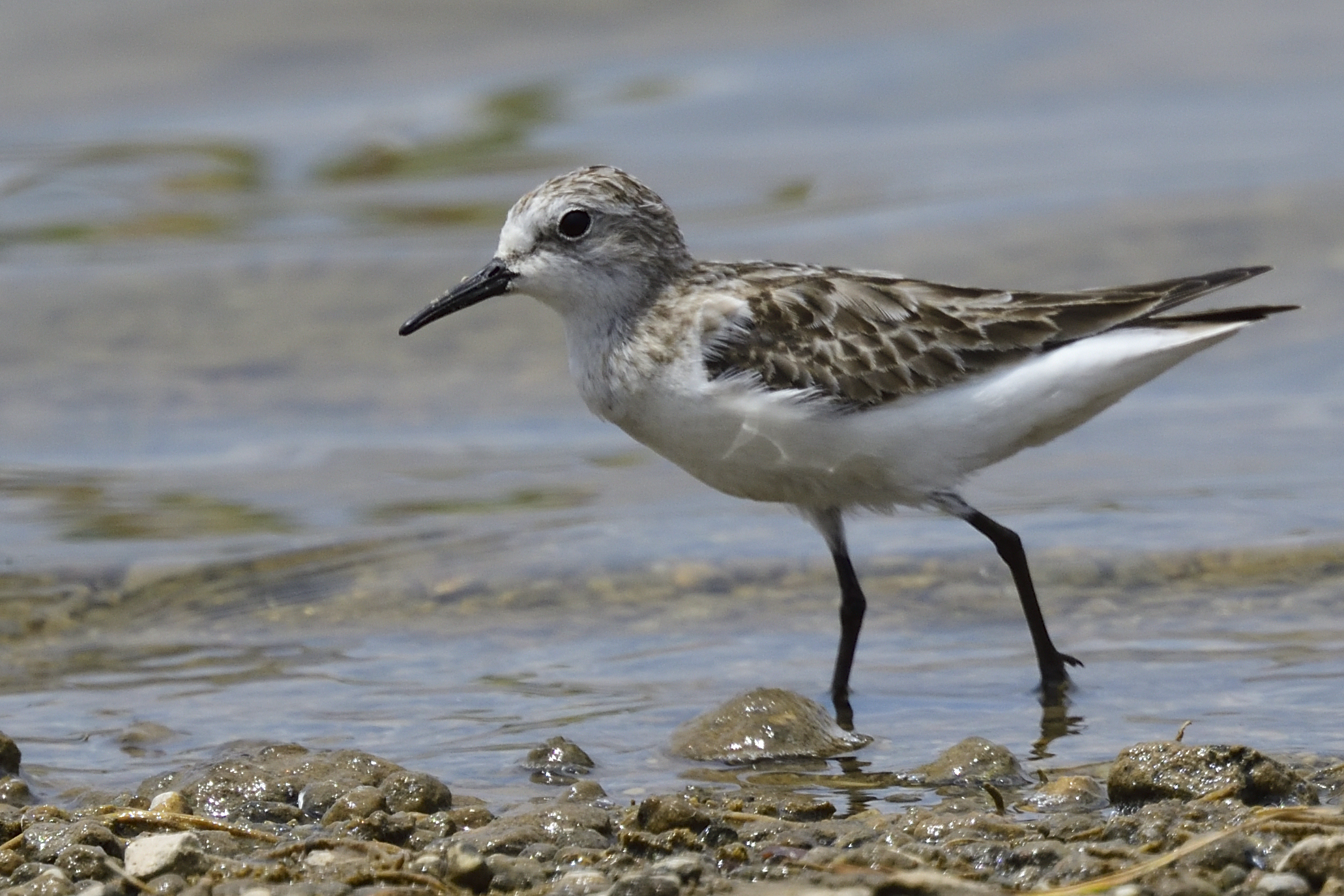
Little Stint, Calidris minuta

African Openbill, Anastomus lamelligerus

Water Thick-knee, Burhinus vermiculatus

African Skimmer, Rynchops flavirostris

Grey-headed Gull, Croicocephalus cirrocephalus
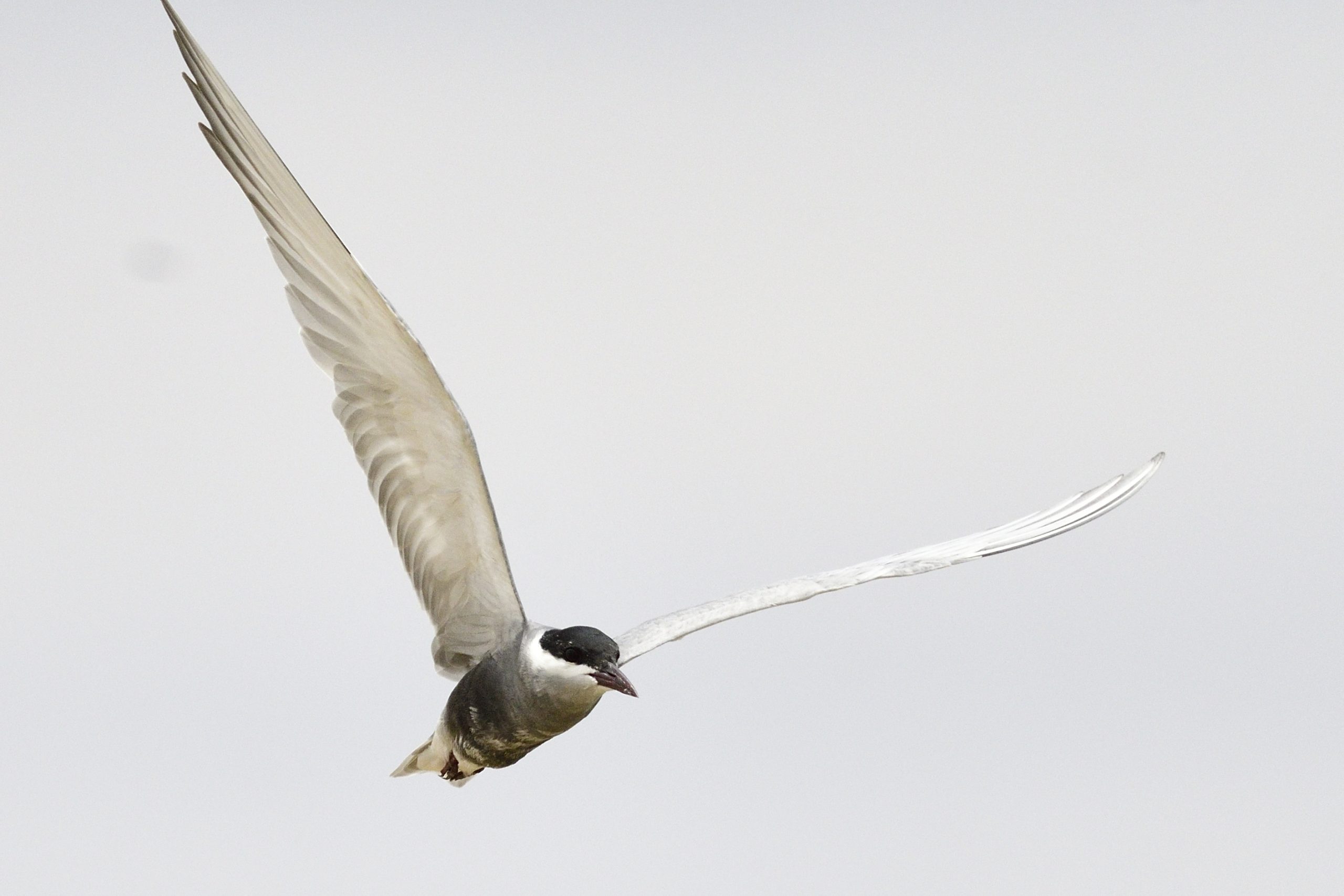
Whiskered Tern, Childonias hybrida
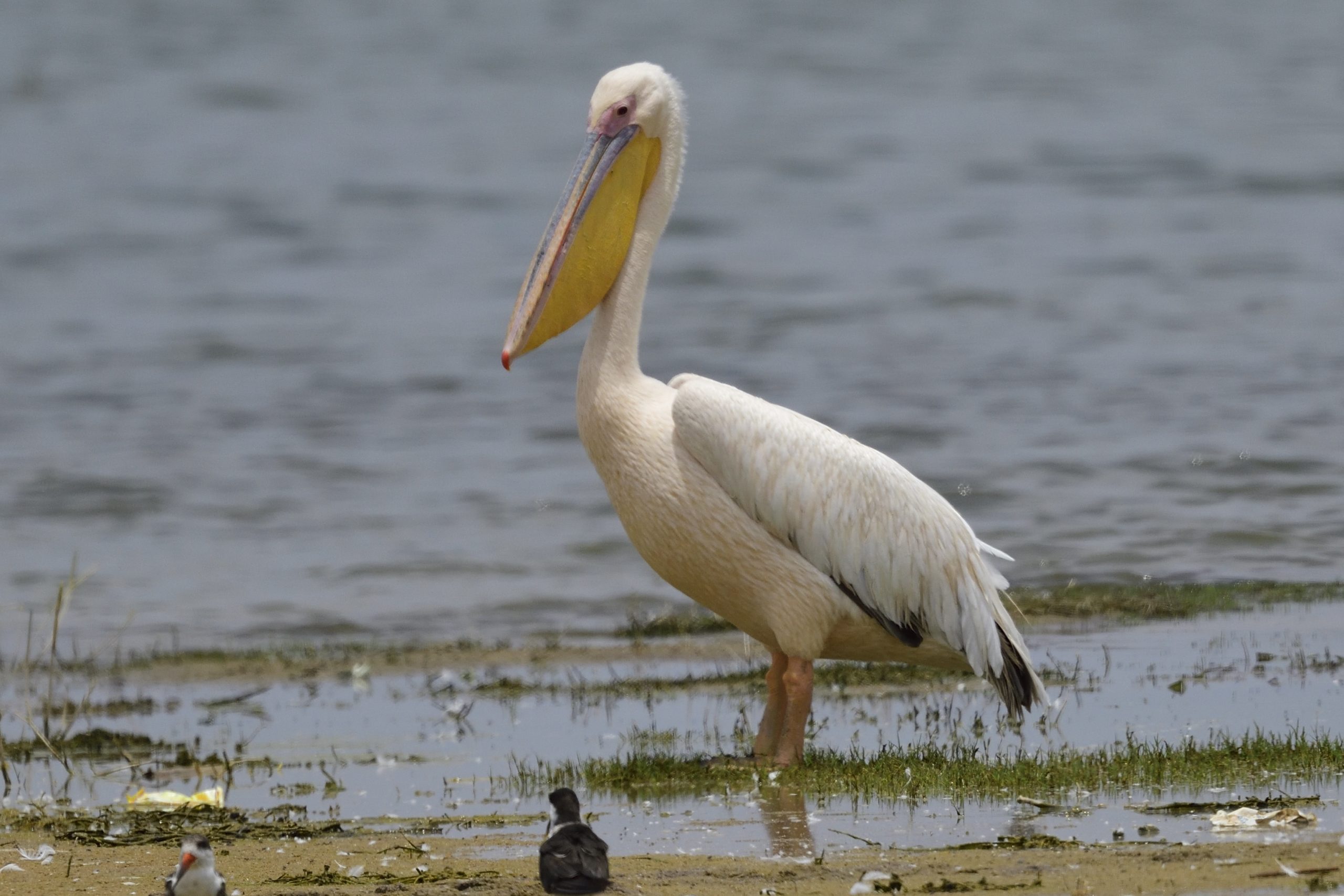
Great White Pelican, Pelecanus onocrotalus

Pink-backed Pelican, Pelecanus rufuscens

Black Heron, Egretta ardesiaca

Western Osprey, Pandion haliaetus
Day 13, October 18 – Arusha NP
That day we were headed for Arusha Narional Park. The park is quite close to my home so we left at 06:30. While I was paying the fees, my friends were birding around the gate. Here are some of the birds registered before breakfast: Grey-crowned Crane, Lesser Honeyguide, Moustached Grass Warbler, Singing and Trilling Cisticola, Bronzy Sunbird, Taveta Weaver, Hartlaub´s Turaco, Cinnamon-chested Bee-eater, Retz´s Helmetshrike, Placid Greenbul, Broad-ringed White-eye, Abbot´s and Kenrick´s Starling, White-eyed Slaty Flycatcher and Rüppel´s Robin-Chat. We had breakfast at the viewpoint overlooking Ngurdotu Crater. After breakfast, we drove up the other wall of the crater and then towards the lakes. We had lunch on a viewpoint overlooking the lakes. On the other crater wall, we registered amongst others, these species: African Olive Pigeon, Martial Eagle, Bar-tailed Trogon, Evergreen Forest Warbler, Cinnamon Bracken Warbler, Brown Woodland Warbler and White-starred Robin. On the road towards the lakes and on the lakes: Cape and Red-billed Teal, Southern Pochard, Maccoa Duck, Greater and Lesser Flamingo, Pied Avocet, Brown Snake Eagle, Winbding and Short-tailed Cisticola, Banded and Brown-throated Martin, Whinchat, Striated Heron, Black-crowned Night Heron, Spotted Eagle-Owl, Orange-breasted Bushshrike and White-fronted Bee-eater. Our next target destination were Mount Meru. On the way up to the waterfalls and on the way down, we registered: Scaly Spurfowl, African Emerald Cuckoo, Tambourine Dove, Mountain Buzzard, Red-fronted Parrot and Abyssinian Crimsonwing. We left the park close to closing time and drove home.
Some pictures from Day 13

Trilling Cisticola, Cisticola woosnami

White-eyed Slaty Flycatcher, Melaenornis fischeri, Endemic to C and E Africa

Rüppel´s Robin-Chat, Cossypha semirufa, Endemic to NE Africa
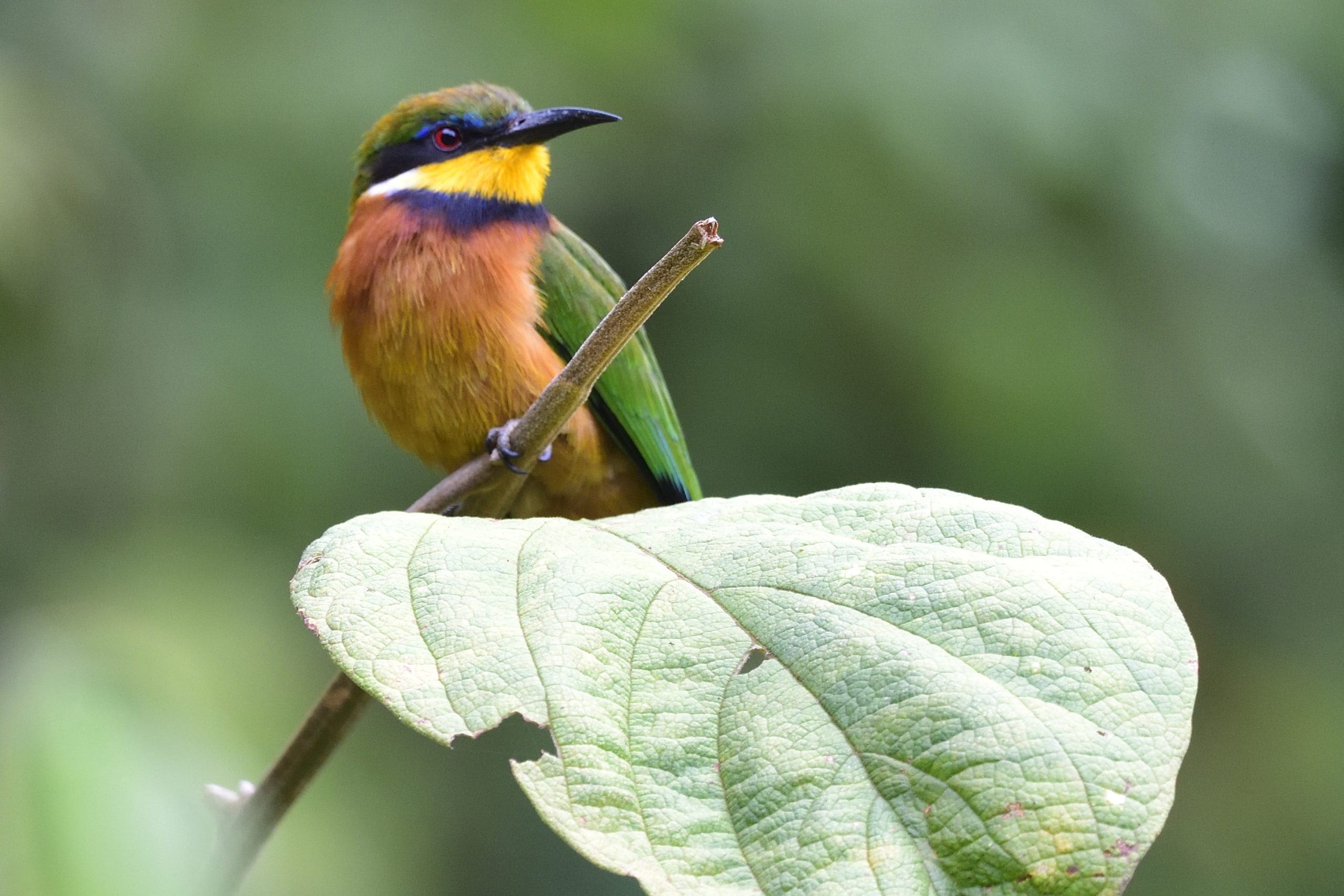
Cinnamon-chested Bee-eater, Merops oreobates, Endemic to East Africa

Abbott´s Starling, Poeoptera femoralis, Endemic to East Africa

Martial Eagle, Polemaetus bellicosus

Barn Swallow, Hirundu rustica

Southern Pochard, Netta erytrophthalma
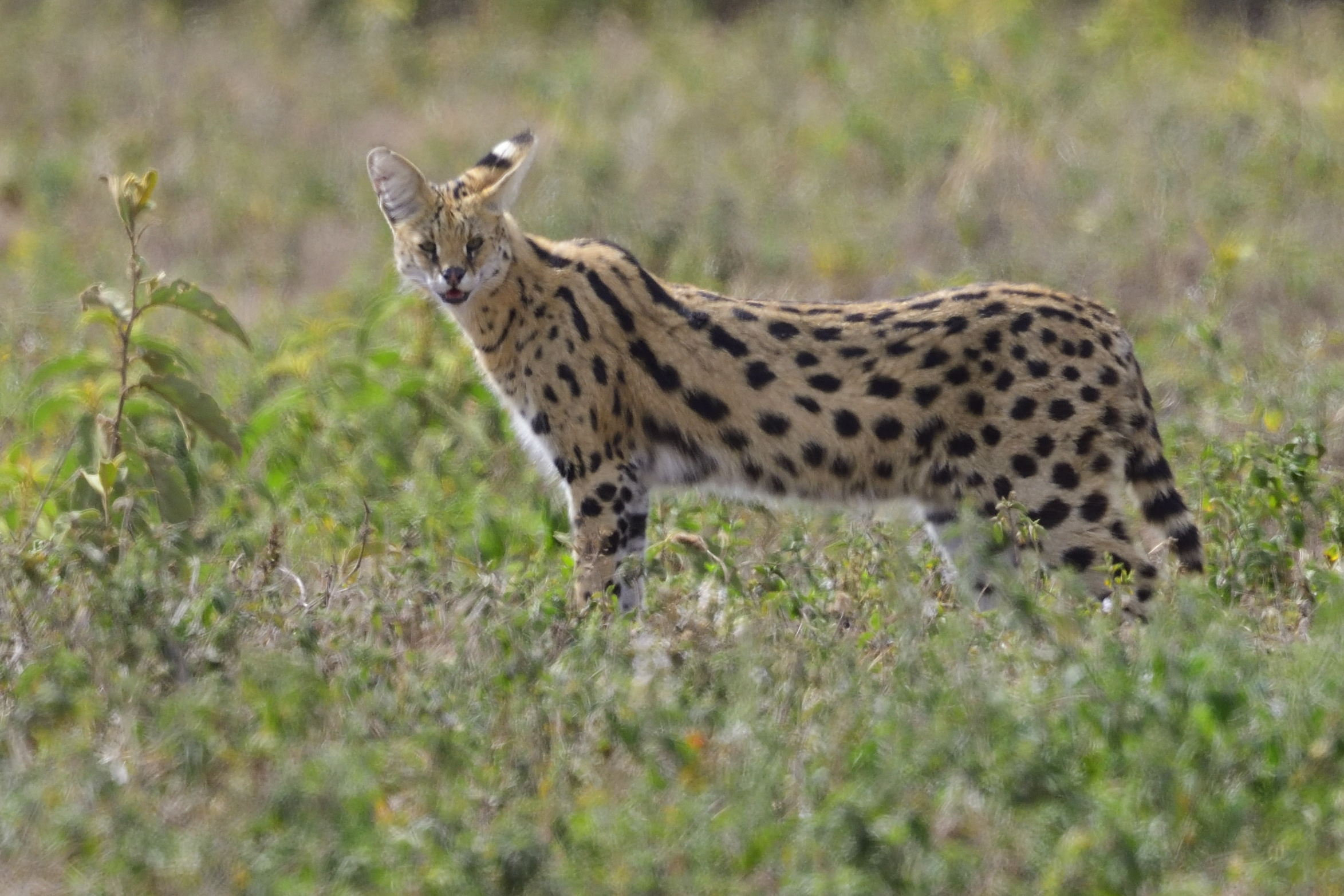
Serval, Leptailurus serval
Day 14, October 19 – Meru Forest & Lake Duluti
It was time for a hike. Meru Forest is quite steep, but when you bird, it is actually easy going. The mist were hanging over the forest when we arrived, but it soon disappeared. We had already picked up Speke´s Weaver on the way to the forest. Before we parked, we also had another target bird: Tacazze Sunbird. Here are some of the other birds we registrated on our walk in Meru Forest: African Goshawk, Broad-ringed White-eye, Yellow-bellied Waxbill, Streaky Seed-eater, Hartlaub´s Turaco, Crowned Eagle, Bar-tailed Trogon, Olive Woodpecker, Black-fronted Bushshrike, Mountain Yellow Warbler, Mountain, Stripe-faced and Placid Greenbul, Brown Woodland Warbler, Abbot´s Starling, African Hill Babbler, Grey-headed Nigrita, Abyssinian Thrush, Abyssinian Crimsonwing, Oriole Finch and Thick-billed Seed-eater. We had lunch at Lake Duluti before we walked around the lake. Our target were Grey Olive Greenbul. We got it early on the walk. Other interesting birds included Red-throated Twinspot, Taveta Weaver, Rüppel´s Robin-Chat, Palm-nut Vulture, Placid Greenbul and Black-throated Wattle-eye. We saw of course many water birds but nothing we had not seen on the trip from before. We drove home had dinner and retired early.
Some pictures from Day 14:
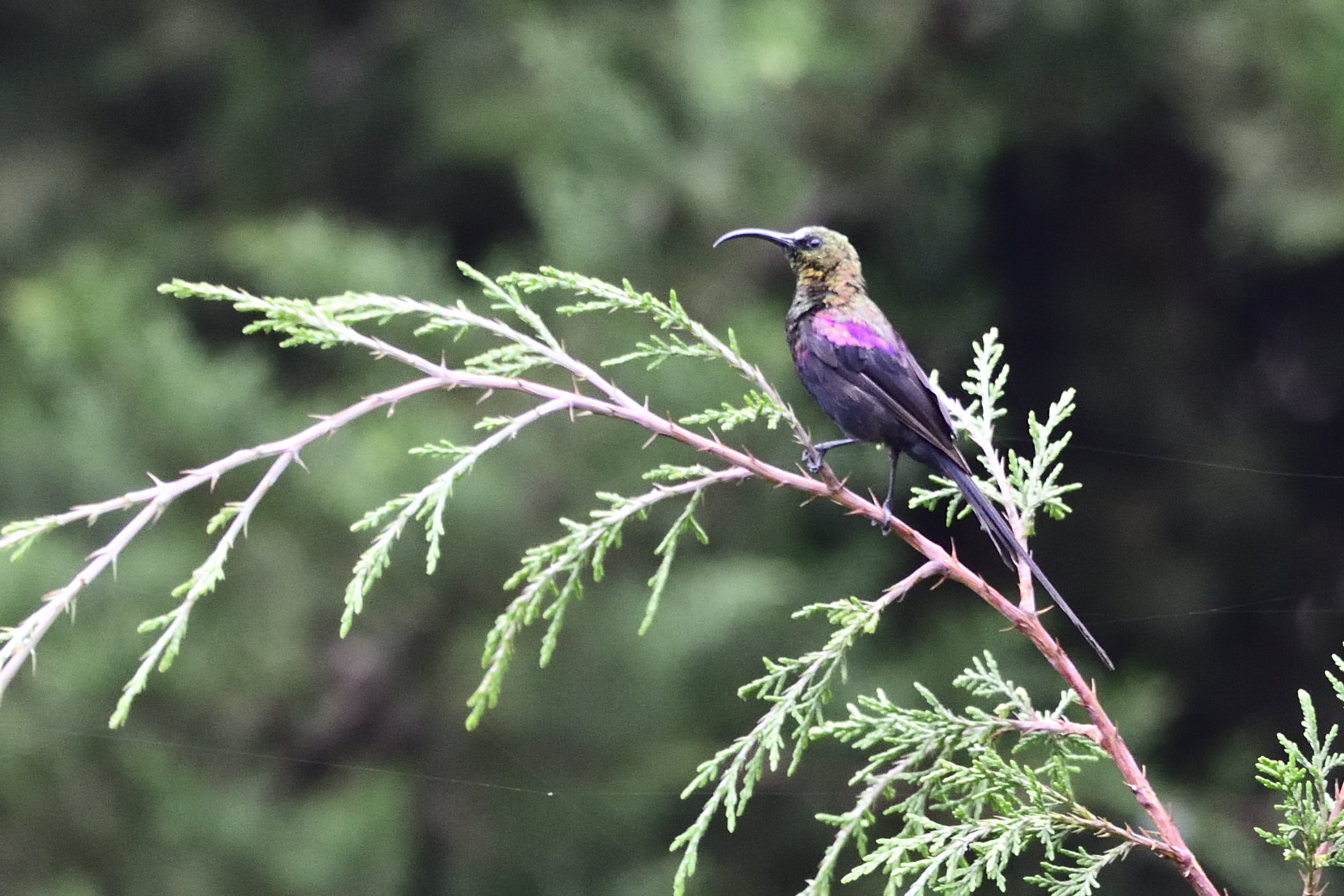
Tacazze Sunbird, Nectarina tacazze, Endemic to NE Africa

Abyssinian Thrush, Turdus abyssinicus

Placid Greenbul, Phyllastrephus placidus, Endemic to SE Africa

Brown Woodland-Warbler, Phylloscopus umbrovirens, Endemic to NE Africa

(Black-headed) Mountain Greenbul, Arizelocichla nigriceps, Endemic to highland forests of S Kenya and Tanzania

Broad-ringed White-eye, Zosterops eurycricotus, Endemic to NE Tanzania with a few species located across the border in Kenya

African Hill Babbler, Sylvia abtssinica

Tropical Boubou, Laniarius major

Palm-nut Vulture, Gypohierax angolensis

Grey-backed Camaroptera, Camaroptera brevicaudata

Monitor Lizard
Day 15, October 20 – Ngasero & Kalanga Forest
That day were dedicated to explore some local forests around my nearest village. We started the morning birding at Kiligolf. Interesting birds recorded included: Greater Painted Snipe, Brown-breasted Barbet, Red-faced Cisticola, African Yellow Warbler, Northern Brownbul, Grey Olive Greenbul, Pale White-eye, Arrow-marked Babbler, Red-capped Robin-Chat, Spotted Palm Thrush, Black Bishop, White-winged Widowbird, Red-throated Twinspot. Mountain Wagtail, Southern Citril and Reichenow´s Seed-eater.
We had breakfast and decided to visit Kalanga Forest. I needed a permit and went to the office while I let my guide take my friends into the forest. Here are some of the birds registered in the forest: Hartlaub´s Turaco, Green Malkoha, Narina Trogon, Crowned Hornbill, Cinnamon-chested Bee-eater, Black-throated Wattle-eye, Forest Batis, Black-headed Apalis, Little and Placid Greenbul, Broad-ringed White-eye, Kenrick´s Starling, Red-capped Robin-Chat and Red-throated Twinspot.
The next stop that day was Danish Forest near Ngarasero Lodge.The prime target there were a Malagasy Pond Heron. Other interesting birds encountered: Pygmy Kingfisher, Black-throated Wattle-eye, African Black Duck, Trumpeter Hornbill, African Fish-Eagle, African Wood-Owl and Red-throated Twinspot.
I have a great spot for viewing both Mount Meru and Mount Kilimanjaro within a short walk from my house. My guests decided to go up there before dinner. They had perfect views of the Slender-tailed Nightjar. We had dinner and after dinner while I had to take care of some urgent business, my friends went out on the Golf Course in the dark. Lucky for me Jeff came back and told me about a Southern White-faced-Owl they had seen. I followed and managed to get nice pictures. This was an East African lifer for me. I have only seen this bird in Southern Africa before.
Some pictures from day 15:

African Pygmy Kingfisher, Ispidina picta

Black-throated Wattle-eye, Platysteira peltata

Malagasy Pond Heron, Ardeola idae

Southern White-faced Owl, Ptilopsis granti
Day 16, October 21 – Kiligolf – Airport
Niels and Jeff had decided to play Golf that day. Jeff woke up early and went out birding on his own. He collected about 50 species early in the morning, the only new birds were a couple of Little Bitterns.
All in all it was a very successful trip. Totally we registered 447 species. Jeff had a target of 116 lifers and got 107, Angela and Alexander got 253 and 251 lifers each whilst Niels got 48 lifers on a target list of only 55. The boys finished their round of Golf, we had a light lunch and I took the Skevingtons to the airport. I organised transport for Niels later that evening. Before writing this, I have already finished 2 more trips. From late September to November 20, I did 3 more or less back to back trip here in Tanzania. My next trip is in Kenya in January 2023. After that, I am wide open for friends that want to come to East Africa for birding trips.